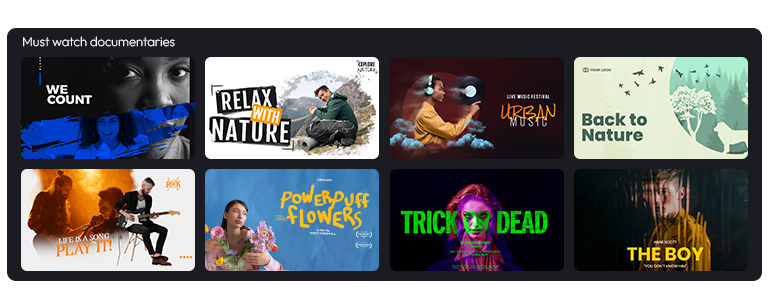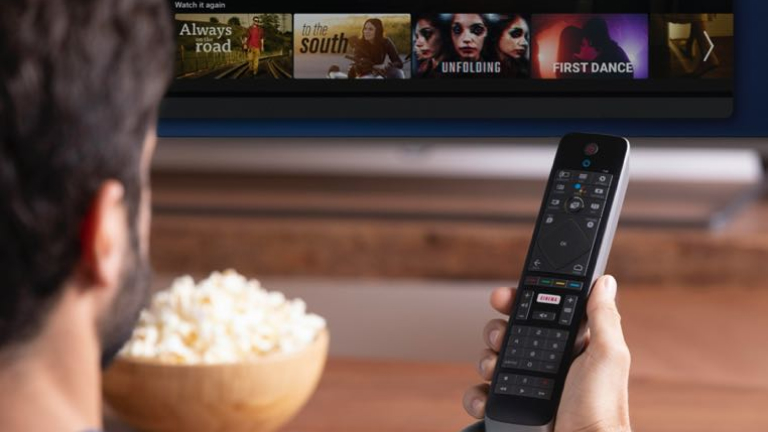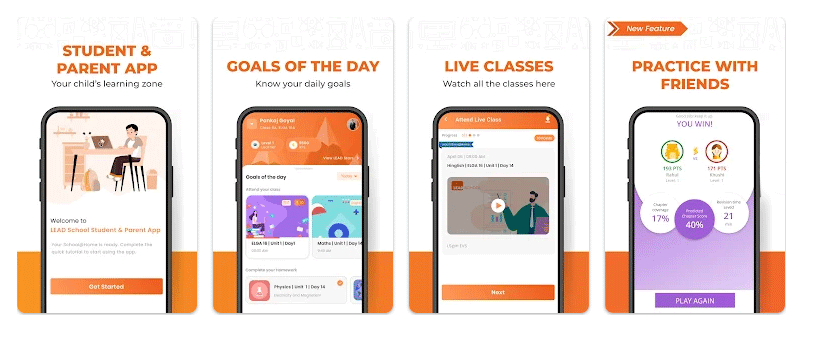Step into the world of OTT streaming, and it’s like walking into a giant buffet of entertainment content options. However, with so many choices of readily accessible content, it’s easy for viewers to feel overwhelmed when choosing what to watch on any OTT streaming service. That’s where the challenge for OTT service providers lies – how can they ensure viewers easily discover lesser-known content titles beyond blockbusters to boost OTT engagement?
To ensure your platform remains relevant and engaging for your viewers in a highly competitive market, you must find ways to elevate OTT engagement levels with new and exciting content. It’s a challenge that requires innovative strategies like personalized recommendations and a deep understanding of viewer behavior and preferences through an analytics-driven approach. We have shared 7 best approaches for maximizing OTT engagement with lesser-known content and driving growth for your OTT platform.
The significance of lesser-known content for OTT engagement
Lesser-known or undiscovered content offers numerous advantages for OTT platforms to elevate customer satisfaction and retention rates. Highlighting lesser-known content can make an OTT platform even more appealing to viewers, providing a competitive edge, attracting a wider audience, and building deeper connections with them.

But that’s not all. Viewers love to explore extensive libraries offering a wider selection of content titles per their preferences. Making the lesser-known content get discovered can elevate OTT engagement and extend session durations as viewers eagerly explore new content. Users exploring lesser-known content create valuable session data that OTT platforms can utilize to provide even more personalized content recommendations. This data helps OTT platforms comprehend the popular content titles among viewers and trace their unique preferences or browsing behaviors.
Key data and projections: Global penetration rate in the OTT video segment
As of January 2023, Amazon Prime and Netflix boast extensive content libraries in the United Kingdom, with Amazon Prime offering over 9,500 titles and Netflix offering 7,400 titles. These impressive libraries highlight the ever-expanding digital content landscape. Despite this abundance, it’s estimated that audiences only engage with a small fraction of these collections, indicating a significant opportunity for lesser-known content to be discovered and appreciated.
As the OTT video segment grows, experts anticipate a steady rise in global penetration rate from 2023 to 2028, potentially increasing by 9 percentage points. By 2028, this could peak at around 54.69 percent, indicating a vast audience for popular as well as lesser-known content. The global Subscription Video-on-Demand (SVOD) market revenue will surpass the $124 billion (about $380 per person in the US) mark by 2028. However, OTT service providers must continue diversifying their content offerings and focus on lesser-known titles in highlight for viewers to improve OTT engagement.
Costs and risks: Implications of top-rated show dominance on OTT platforms
Let’s explore the implications of top-rated show dominance on OTT platforms that help identify gaps for devising effective strategies to promote lesser-known content.
- Reduced Revenue Potential: OTT platforms invest significantly in diverse content, whether original or acquired titles. But, when users overlook a substantial portion of it, this leads to missed opportunities to generate more revenue. This includes reduced ad earnings, fewer subscribers, and lost chances to upsell premium content. Platforms should allocate resources strategically to promote their lesser-known content, boosting OTT engagement through targeted promotions and incentives.
- Limited Viewer Engagement and Retention: Viewers who exclusively engage with top-rated shows may not explore other content titles on the platform. This can lead to lower OTT engagement and retention rates, as viewers may need help finding enough content that resonates with their interests. Platforms can solve this issue by employing enhanced content discovery mechanisms and offering personalized recommendations.
- Potential for Brand Erosion: If an OTT platform becomes synonymous with a limited set of shows, it may be perceived as something other than a complete entertainment destination. This can affect its brand image and market position. OTT service providers can counter this by highlighting their extensive catalog of undiscovered content as a distinguishing factor.
- Inefficient Content Delivery and Storage: Less-watched content may occupy server space and resources without delivering commensurate returns, leading to inefficiencies in content storage and delivery systems. OTT service providers can address this by optimizing their content delivery and storage infrastructure to minimize resource wastage while maintaining access to undiscovered content.
- Decreased Long-Tail Revenue: Often, less-watched content can continue to generate revenue as viewers discover it over time. By neglecting this long-tail potential, OTT service providers miss out on a valuable revenue stream. OTT platforms should implement strategies to promote lesser-known content through other channels, such as email alerts.
Effective approaches to boosting user interaction with lesser-known OTT content
Below, we have outlined effective strategies enabling smart content discovery for lesser-known titles, leading to enhanced OTT engagement and high user retention rates.
Personalized Recommendations
- Personalized User Suggestions: OTT platforms can effectively deliver Tailored Suggestions for users by employing sophisticated engines that leverage advanced AI/ML algorithms to analyze user preferences and view history. This allows them to provide deep learning-powered recommendations highlighting undiscovered content aligned with their interests.
- Contextualized Content Discovery: Consider a scenario where a user has watched four out of seven movies in the Harry Potter series. Based on this pattern, the recommendation engine would suggest the fifth movie next, aligning with the user’s demonstrated interest. This example illustrates how a nuanced understanding of user preferences and interests can enable the system to recommend relevant yet undiscovered content. Such a contextual approach boosts user engagement by introducing them to new or undiscovered content they will likely enjoy.
Benefits: Utilizing personalized recommendation engines, OTT service providers can guide users to explore lesser-known content, significantly increasing user engagement.
Content Curation

- Thematic Collections: Develop thematic collections or playlists featuring lesser-known content related to trending topics, genres, or seasons. For instance, when a new James Bond movie is released, a dedicated rail could be featured, offering users easy access to all the previous James Bond movies and encouraging them to explore and watch the entire collection of content titles. This curated selection ensures that fans can dive into the captivating world of the iconic spy and discover hidden gems from the franchise.
- Expert Collaboration: Collaborate with industry influencers or experts to curate lists of lesser-known content titles.
- Curated Sections: Showcase undiscovered content through meticulously curated playlists, prominently featured categories, or dedicated “hidden gems” sections.
- Sustainable Interest: Vigilantly refresh and update these collections to sustain user interest.
Benefits: Curated collections improve content discovery on OTT platforms by helping users find lesser-known content or relative titles and ensure content diversity for a broader audience appeal.
“Search Me or Discover New” Feature
- Innovative Discovery Feature: OTT platforms can innovate by introducing a “Search Me” feature, underpinned by advanced machine learning algorithms, to curate selected lesser-known content tailored to user preferences and promote the lesser-known content. Many OTT platforms consider naming this feature as “Discover New,” “Out of the Box,” “Element of Surprise,” or “Not Your Regular” to catch the user’s attention and effectively show them relevant content titles.
- Fresh Content: When users explore the “Discover Content” feature, the platform generates entirely randomized recommendations based on the user’s viewing history, considering past choices and interests. This algorithm helps exclude previously watched options to ensure fresh and uncharted content recommendations.
Benefits: This strategy enhances content discovery, motivating users to explore lesser-known content beyond their usual preferences, thus promoting higher user engagement.
Limited-Time Promotions
- Spotlight Hidden Gems: Strategically devise time-sensitive promotions, bringing lesser-known content to the forefront.
- Enticing Offers: Extend discounts or free access for a limited period to entice users to explore new and lesser-known content.
- Multi-Channel Alerts: Deploy multi-channel notifications, including email, push notifications, or in-app messages, to alert users about these promotions.
Benefits: Limited-time promotions highlighting undiscovered content with discounts and free access entice users, while multi-channel notifications boost user awareness, increasing OTT engagement and potential revenue for OTT platforms.
User-Generated Content (UGC)
- Cultivate User Participation: Create an environment encouraging users to share reviews, ratings, or content recommendations.
- Trust and Social Proof: Feature user-generated content alongside lesser-known content to foster trust and enhance social proof.
- Social Integration: Incorporate social media integrations to enable users to effortlessly share their reviews and promote their favorite content titles on popular platforms, enhancing content discovery and fostering a dynamic, user-driven promotion.
Benefits: UGC enhances trust and fosters user connections. It provides valuable insights for improving content recommendation strategies to motivate users to explore lesser-known content, boosting OTT engagement.
Interactive Features
- Engaging Experiences: Develop interactive and engaging experiences centered around undiscovered content, including quizzes, polls, or dedicated forums to entice users.
- Live Engagement: Host live Q&A sessions with actors, directors, or creators of lesser-known shows to ignite enthusiasm among users.
Benefits: Interactive features on OTT platforms enhance OTT engagement and create excitement around lesser-known content, differentiating the platform.
Cross-Promotion
- Strategic Exposure: Strategically promote lesser-known content within high-profile or flagship series to diversify viewership.
- Advanced Integration: Seamlessly integrate teasers or trailers for lesser-known content during commercial breaks or inter-episode intervals.
Benefits: Cross-promotion on OTT platforms enhances content diversity and encourages users to explore undiscovered content beyond top-rated shows, increasing OTT engagement and the stickiness of viewers.
Key performance indicators (KPIs) for assessing lesser-known content engagement
In the effort to engage viewers with lesser-known content besides their typical top-rated show preferences, it is essential for OTT platforms to prioritize tracking and analyzing specific metrics. Below are the KPIs that demonstrate the effectiveness of the OTT strategies for lesser-known content engagement:

These KPIs provide indispensable insights into the effectiveness of strategies promoting lesser-known content, amplifying OTT engagement, and enriching the user experience. In practice, OTT platforms can use this data to optimize their content discovery algorithms and attract viewers to traverse the breadth of their content catalog beyond the confines of top-rated shows.
Strategies like personalized recommendations, content curation, and the “Discover New” feature are designed to boost interaction, enhance retention, and foster customer loyalty. These strategies enable OTT platforms to adapt to evolving user preferences and provide seamless experiences.
Robosoft Technologies has a proven track record of delivering delightful, cross-device, multi-platform OTT experiences for major media brands and streaming giants such as Canela Media, Magnolia, and Discovery+. We specialize in crafting intelligent design systems and digital solutions focusing on product intent, consumer behavior, and business objectives to help build engaging customer experiences. Contact us to begin your journey toward world-class OTT app streaming solutions.










